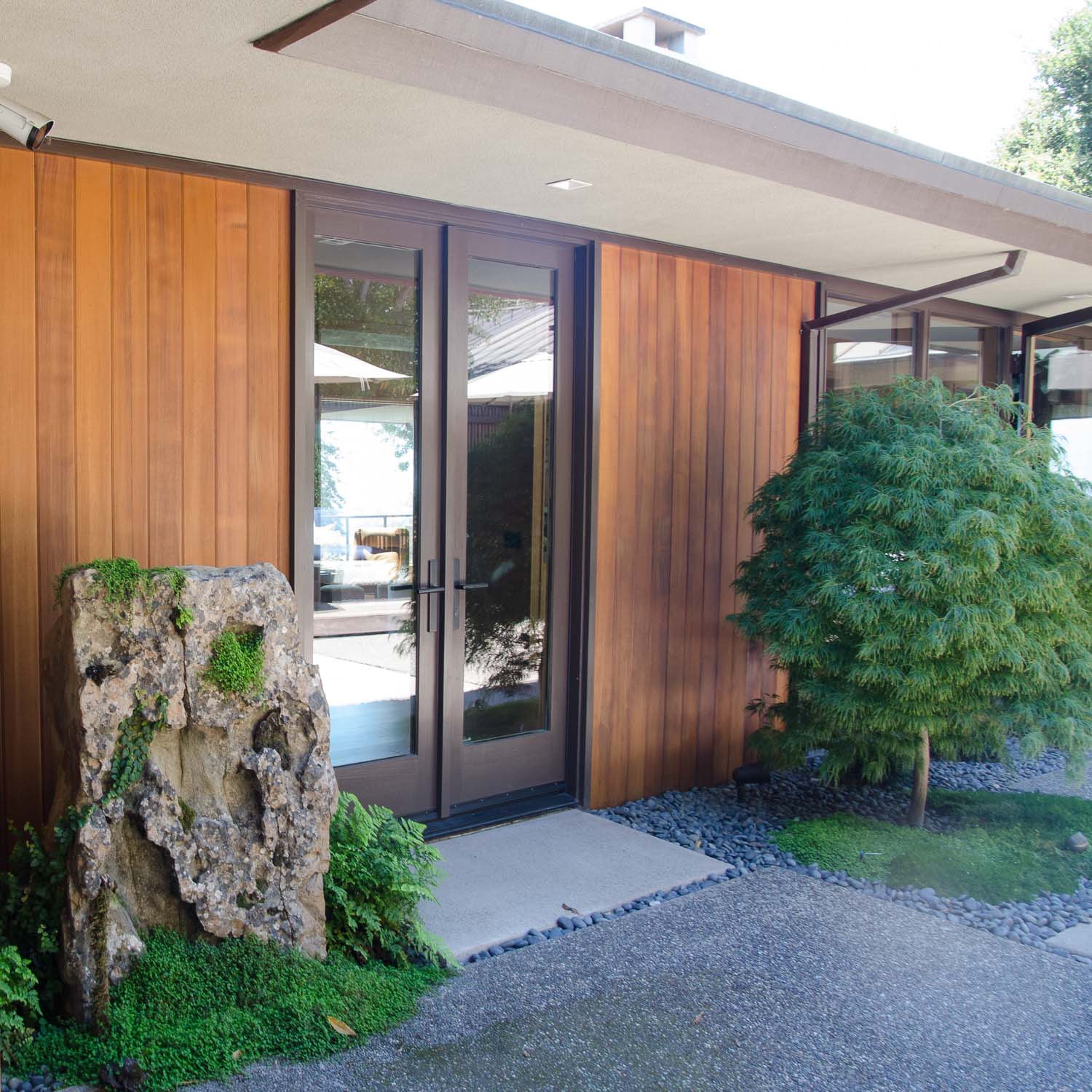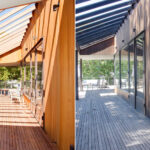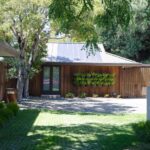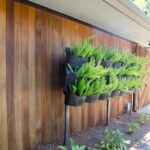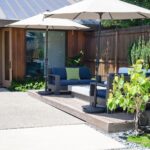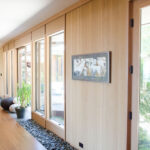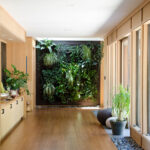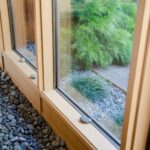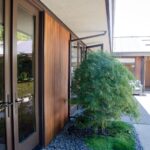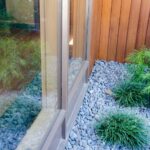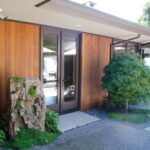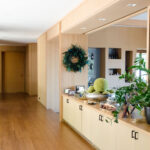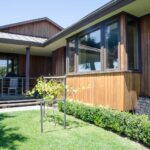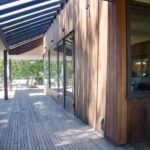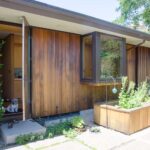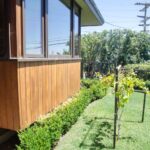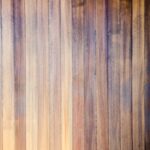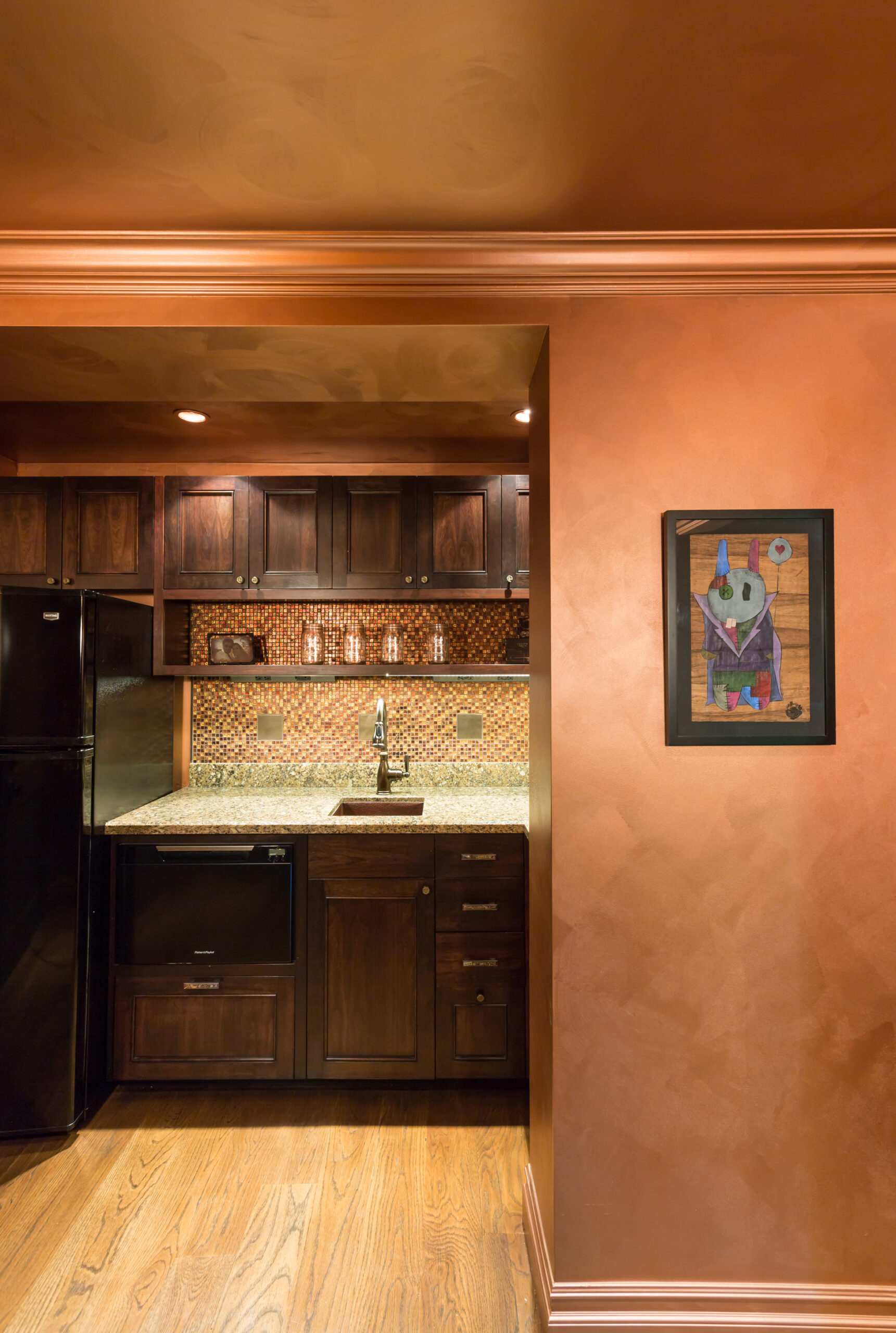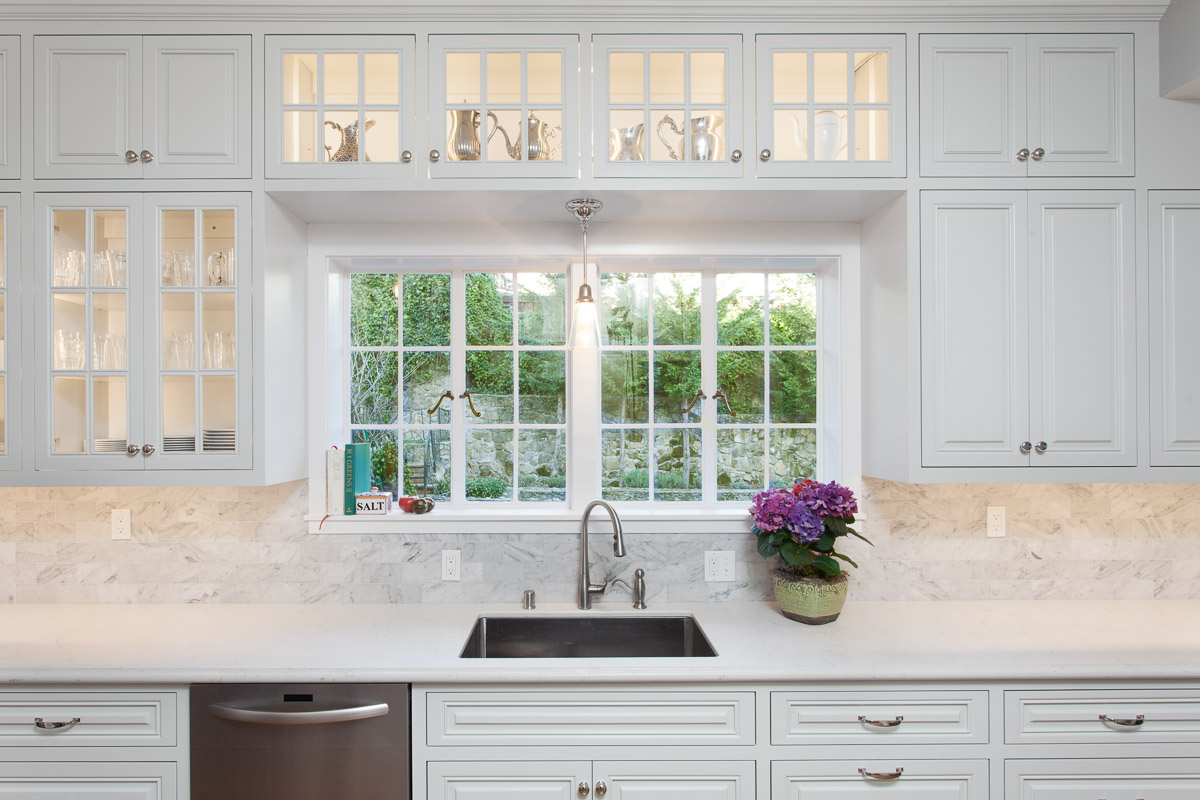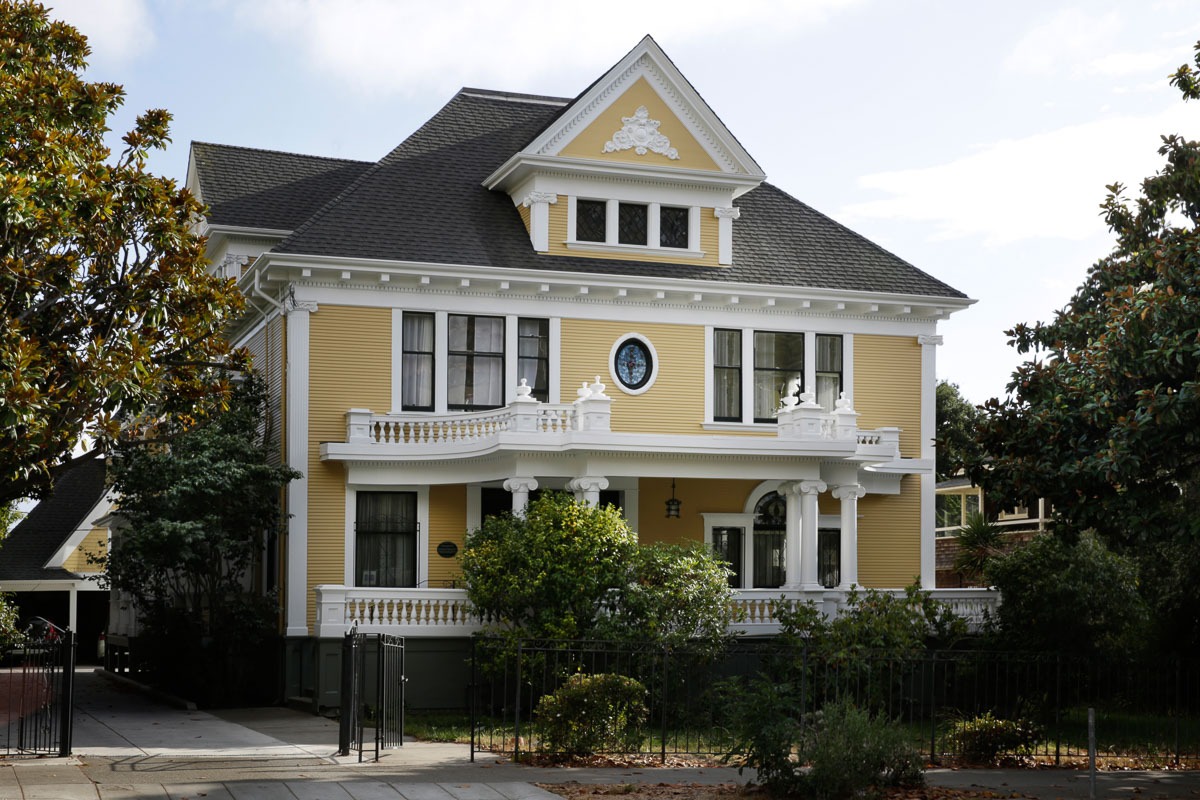10 years ago, when this cedar siding was new (see first image in this portfolio), it was a bright burnt orange color. There’s an expected curing process, of course; and there were unexpected changes. The overall deepening of the original color was expected. The areas where the wood cured unevenly and turned almost black, those were meant to be preventable.
In contrast, the interior wood stain has held up beautifully due to the lack of exposure to the elements.
This project exemplifies the fact that sometimes a more ‘eco-friendly’ product is actually less effective at achieving the goal: i.e.: preserving the look and longevity of the wood. As a LEED certified project, specifications required Arana to use a water-based sealant. However, after having to call us back to her home to apply this product once a year for two years, and seeing how the stain was ineffective at penetrating the wood evenly, leading to dark spots and a lack of overall protection, the homeowner opted for an oil-based product — on the sides of the home that are in direct sunlight and more susceptible to weather. The VOCs are higher, but the results preserve the original materials longer, which is arguably equally important, from a green-building perspective.
To read more about what LEED certified green building techniques and systems did and didn’t pass the test of time, click here to read our article in Oakland magazine.
